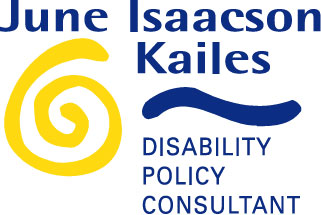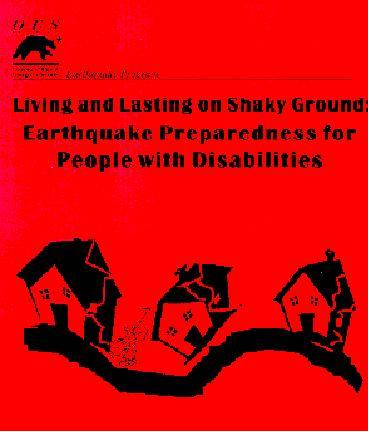


The challenge is to
integrate and weave preparedness activities into
your typical activities daily, weekly,
monthly, seasonally, yearly so they are not considered extra, ‘in
addition to’,
or “special projects, but just a normal,
standard & regular part of life as
usual.


Note
to reader,
These
resources are selected based on an informal analysis of:

Emergency
Travel Safety Tips for Overnight Stays, Edition 1 –
October 2017 - Tips for everyone. Items with a [*] are specifically for
people
with disabilities who because of a variety of disabilities (mobility,
breathing, allergies, hearing, seeing, walking, understanding or
chronic
conditions) may have difficulty or be unable to: use stairwells, hear
alarms,
see or read exit signs and understand instructions. Safety tips
include: check-in, personal support, in
your guest room, other safety
tips and more resources.
Feeling
Safe, Being
Safe –
Webcasts,
videos and materials developed with, for and by people with
disabilities.
Easy-to-use tools that employ a simple learning method, Think-Plan-Do.
Uses
plan language and accessible formats to ensure use by a broad rand of
individuals who may have limitations in reading, understanding,
learning, and
remembering, Training is available through webcast individual training
as well
as group training. **
Last accessed 05.21.11
Disaster Preparedness
Tips for
PEOPLE WITH DISABILITIES, ** [English and Spanish]
by June
Kailes - Although these
"Tip Sheets" focus on earthquake safety, they are useful for
all types of disaster preparedness: power outages, fires, floods,
hurricanes,
nuclear power plant accidents, tornados, tsunamis, volcanoes, winter
storms and
very cold or very hot weather. last accessed 01.29.10
Prepare
in a Year –
one hour a month helps you be ready for
disasters whenever they occur. from the Emergency Management Division,
State of
Washington, last accessed 09.4.12
Preparing for
Disaster
for People with Disabilities –
(2004) from FEMA, available in Spanish Formats: PDF, TXT, last
accessed 09.4.12
Preparing Makes
Sense for
People with Disabilities and Other Access and Functional Needs
– Video (2013) Captioned
and signed, contains information specific to people with disabilities
and others
access and functional needs regarding emergency preparedness.
Psychological
Preparedness for Stressful Events - from the Virginia,
last
accessed 01.3.12
Tips for Emergency Use of
Mobile Devices
-
Edition 2, (2015) Cell phones, smart phones
and other mobile wireless devices like tablets are a big part of our
lives. We
rarely leave home without them and we often store important information
on them.
In a small or large emergency they can be a communication life line.
Provides
details regarding preparing your device to quickly get and give
emergency information
which includes a checklist, emergency
contacts and documents, alerts, texting,
apps,
bookmarks of important mobile sites, “no service” backup plans, skill
drills
and other resources. Last accessed 04.29.15

From
Buildings
Evacuation
and Accommodation of People with Disabilities - Project Safe
EV-AC
- posted 11/23/06
Emergency
Travel Safety Tips for Overnight Stays,
Edition 1 – October 2017 -
Tips for everyone.
Items with a [*] are specifically for people with disabilities who
because of a
variety of disabilities (mobility, breathing, allergies, hearing,
seeing,
walking, understanding or chronic conditions) may have difficulty or be
unable
to: use stairwells, hear alarms, see or read exit signs and understand
instructions. Safety tips include:
check-in, personal
support, in your guest room, other
safety tips, and more resources.
Inclusive
Event
Procedures for Emergencies, Edition I, October 2017 -
Event
procedures for emergencies should be incorporated into event planning.
Emergency procedures should anticipate the needs of everyone. Planning
should
recognize that there will be attendees with disabilities who may need
evacuation or other assistance in an emergency. These attendees have a
variety
of disabilities (mobility, breathing, allergies, hearing, seeing,
reading,
understanding) or chronic conditions and may have difficulty or be unable to: use stairwells, hear
alarms, see
or read exit signs and understand instructions. Contents include:
applying
emergency planning strategies, safety considerations for site
selection,
projecting numbers of attendees with disabilities, checklist for
inclusive
emergency safety briefings for attendees, emergency
planning with event facilities staff and more resources. Readers
should
use this emergency event guidance in conjunction with information
found
in “Accessible Meetings,
Events, and Conferences Guide.” http://www.adahospitality.org/accessible-meetings-events-conferences-guide/book
Transportation
Access
& Functional Needs Evacuation Planning
Toolkit DVD
supports counties in planning for the evacuation and transportation
needs of
all individuals during an emergency. Includes issues to consider while
planning
for a large scale evacuation and provides tools. last accessed
02.28.16

Training
and planning materials to be used by trusted
community organizations to teach disaster readiness practices to people
who are
served by the organizations. Useful local fire service agencies
and
partner community organizations to increase installation and testing of
smoke
alarms in high fire-risk residences, and provide effective smoke and
fire
safety planning by the individuals and families living in those
residences. last
accessed 05.21.11
Earthquake
Preparedness
Guide for People with Disabilities and Others with Access And
Functional Needs [2014] Earthquake County
Alliance

Earthquake Information from U.S. Geological
Survey adena Office , last accessed
01/30/08, includes
minute by minute current information,
including:
Living and Lasting on Shaky
Ground: An Earthquake
Preparedness Guide for People with  Disabilities, 1996, 147
pages.
Disabilities, 1996, 147
pages.
** Format PDF: A,
B, C,
D, E,
F
Provides
practical and disability-specific information used as a preparation
tool for
individuals with disabilities, their friends, families and service
providers.
Guide also serves as a training tool kit for disability-related
organizations
who offer workshops on earthquake preparedness for people with
disabilities.
Topics includes:
understanding why
preparation is important, creating practical plans, identifying
resources,
developing strategies and putting plans into practice.

Disabled
People and Disaster Planning
a group of people primarily from Los Angeles County who met during 1996
and
1997 and formulated recommendations to reduce problems with
accessibility that
many people with disabilities experienced after the Northridge
Earthquake of
1994. This group included individuals with disabilities and individuals
from
the disaster planning and response professions. ** last
accessed 01/17/08
Disaster Preparedness For Persons With Disabilities Improving California's Response: A Report by The California Department of Rehabilitation, April 1997. ** last accessed 01.3.12
Emergency
Preparedness and Emergency Communication Access: Lessons Learned Since
9/11 and
Recommendations the work of the Deaf and Hard of Hearing
Consumer
Advocacy Network (DHHCAN), The report represents
an extensive summary of personal experiences by individuals who are
deaf and
hard of hearing on the fateful day of September 11, 2001 and thereafter
under
different circumstances.** last accessed 12.26.09
September
11, 2001: A Day to Remember,**
New Mobility, 11/0, last accessed
01/17/08
Unsafe
Refuge, Why did so many wheelchair users die on Sept. 11? ** New Mobility, 12/01, last accessed 01/17/08
Why
We Don't Prepare Floods, Tornadoes, Hurricanes, Wildfires,
Earthquakes
..., by AMANDA RIPLEY/ BOULDER, Sunday, Aug. 20, 2006, Time Magazine
–An
excellent and thought provoking article. Word Format


Emergency Evacuation Preparedness: Taking Responsibility For Your Safety, A Guide For People with Disabilities and Other Activity Limitations - ** last accessed 01.29.10, From June Kailes [2002], contents - see description under Guides
Emergency
Preparedness: Taking Responsibility For Your Safety - Tips for People
with
Activity Limitations and Disabilities
Los Angeles County Emergency Survival
Program [2006] **, Formats: PDF, Microsoft Word 1 & 2, last
accessed 01.29.10, contents - see description
under Guides
Your
Neighborhood
Building
a neighborhood readiness plan – from the City of Los Angeles …
with over 4
million people in the City, rescuers may not be able to provide
immediate
support to every neighborhood in need. Neighbors should be prepared to
help
themselves for several days to weeks depending on the size of the
disaster. Last
accessed 08.16.13, resources include:
Map Your Neighborhood
last accessed
05.24.11
A
promising
practice, from Washington State, helps neighborhoods prepare
for disasters

Students at Oregon School
for the Deaf created a video in
American Sign Language to help the American Red Cross Williamette
Chapter in
Salem, Oregon reach more people in the community. It informs people
about 3 important
preparedness actions for emergencies – Get a Kit, Make a Plan, and Be
Informed. - 5 minutes
Emergency
Car Kit: 10 Essentials for a Road Evacuation - 2 minutes, last
accessed 02.5.10, Access
Issues: not
captioned, but text transcript is
included on the web page!

Chemical
Sensitivities and Allergies, last accessed 01/17/08
HEPA (High Efficiency
Particulate Air
Filtration) Filter Fans
Once you have sealed a room
with plastic sheeting and
duct tape you may have created a better barrier between you and any
contaminants that may be outside. However, no seal is perfect and some
leakage
is likely. In addition to which, you may find yourself in a space that
is
already contaminated to some degree.
Consider a portable air
purifier, with a HEPA filter, to
help remove contaminants from the room where you are sheltering. These
highly
efficient filters have small sieves that can capture very tiny
particles,
including some biological agents. Once trapped within a HEPA filter
contaminants cannot get into your body and make you sick. While these
filters
are excellent at filtering dander, dust, molds, smoke, biological
agents and
other contaminants, they will not stop chemical gases.
Some people, particularly
those with severe allergies and
asthma, use HEPA filters in masks, portable air purifiers as well as in
larger
home or industrial models to continuously filter the air.
Disaster Preparedness: A Guide for Chronic Dialysis Facilities - Produced by The Kidney Community Emergency Response Coalition. Formats: PDF, Microsoft Word. Last accessed 12.26.12
Deaf,
Hard of Hearing and DeafBlind People
Building an Emergency Kit: Checklist, By Elizabeth Spiers, 2007, Association for the Deaf-Blind, Last accessed 01.11.12
Disaster
Preparedness for Deaf, Hard of Hearing and DeafBlind People
- Video is signed
and captioned, last
accessed
12.26.09
Videos with ASL
interpreters
advising how to prepare for and cope with emergencies. The 18 videos also have an audible voice over and
text appearing alongside the interpreter. Along with the videos
is the
Emergency Preparedness Guide formatted in Braille, large print, and
regular
font for download. Last accessed 12.26.09
National Fire Protection Association’s comprehensive guide on Smoke Alarms for People Who Are Deaf or Hard-of-Hearing, (Format: PDF), last accessed 12.26.09
Developmental Disability
Emergency
Preparedness Webinar for
PAS Users: Transcript, Slides Personal
Assistance Center for Personal Assistance Services 8/23/13. Highlights
tips
relevant to individuals who use personal assistants, attendants.
Planning
elements include support teams, communication, evacuating and
sheltering,
supplies and resources that provide additional ‘how to” details on
these areas.
Input from online surveys and research with PAS
users with real world experience with living through an emergency are
also be
woven
into this webinar.
Emergency
Preparedness for Personal
Assistant Services (PAS) Users, Edition 2.0, 2016 contains tips
specific to
individuals who use personal assistants, attendants or caregivers.
Planning
elements include a checklist, support teams, communication, evacuating
and
sheltering, supplies and resources that provide more ‘how to” details. WORD
Emergency
Power
Planning for People
Who Use Electricity and Battery Dependent Assistive Technology and
Medical
Devices, ** From June Kailes [2009], format: PDF,
contents - see description under Guides
Emergency power planning for people who use electricity and battery dependent assistive technology and medical devices Checklist and Podcast (2013) from Pacific ADA Center.
Speech
Limited
Speech: Preparedness Checklist last accessed 09/18/08
Service Animals
Animals in Emergencies – What Owners Need to Know, 40 minute video 2007, captioned, last accessed 12.23.11, Spanish Version
Service Animal Emergency Preparedness, last accessed 01/17/08
Information
form: Interagency
Coordinating Council On Emergency Preparedness And Individuals With
Disabilities last accessed 09.2.10

Emergency Health
Information (2011 Edition 2)** in PDF,
Microsoft
Word.

Are You Ready Guide
FEMA Guide,
<>American Red Cross Preparedness Publications, last accessed 12.26.09
Prepare in a Year – one
hour each month helps you be ready
for disasters whenever they occur. last accessed 09.4.12 , from the
Emergency
Management Division, State of Washington

 jik@pacbell.net
jik@pacbell.net
© 1998 - 2017 June Isaacson
Kailes, Disability Policy Consultant, All Rights Reserved.
Created 11/8/97
| Updated 03.3.19